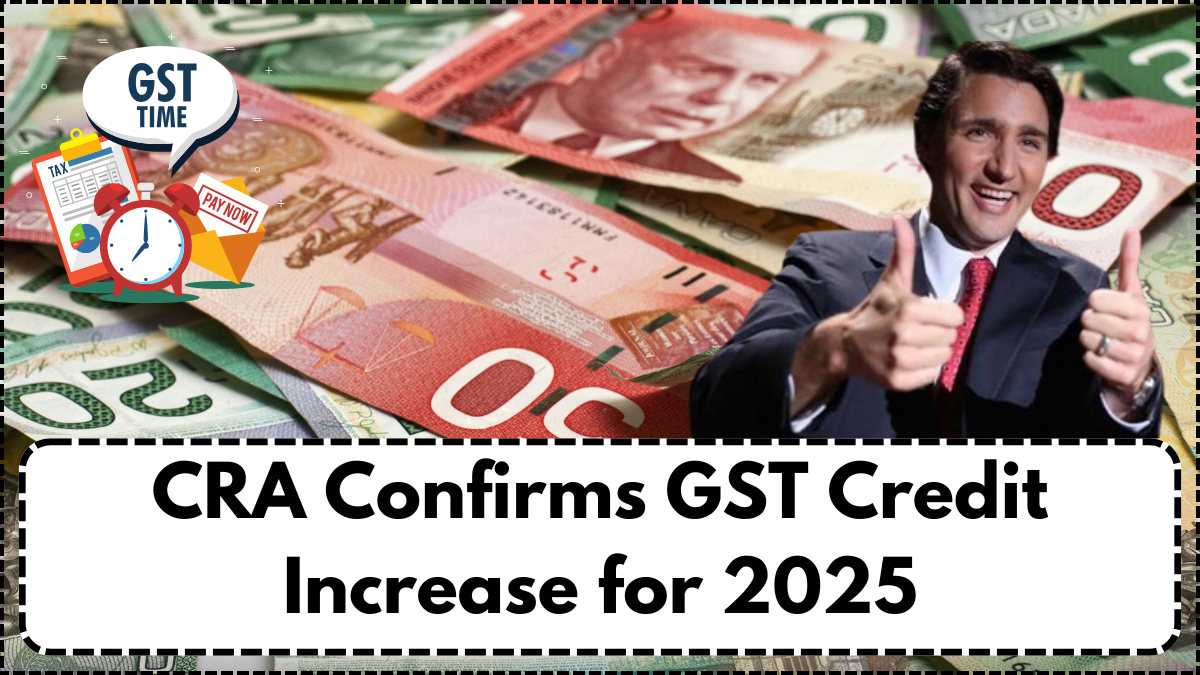In a major update from the Canada Revenue Agency (CRA), the federal government has confirmed a new increase in the GST Credit for 2025. This development, announced as part of the latest economic measures, is designed to support low and moderate-income individuals and families amid continuing inflation and cost-of-living challenges. The enhanced payments will be rolled out beginning in July 2025, with the CRA updating eligible amounts to reflect new thresholds.

What is the GST Credit and Who Benefits?
The Goods and Services Tax (GST) Credit is a non-taxable benefit paid quarterly to eligible Canadians to help offset the GST or HST paid on goods and services. It’s primarily aimed at low- and modest-income households, including single individuals, couples, and families with children.
The 2025 update significantly boosts these amounts to better align with current economic realities. According to CRA projections, more than 11 million Canadians are expected to receive increased GST Credit payments starting this summer.
Updated GST Credit Amounts for July 2025
The CRA has adjusted the GST Credit for 2025 based on inflation and income data from previous tax years. Here’s a breakdown of the new maximum payments:
| Recipient Category | Maximum Annual Credit (2025) | Quarterly Payment (Starting July 2025) |
|---|---|---|
| Single Individual | $542 | $135.50 |
| Married/Common-law Couple | $712 | $178.00 |
| Child (per eligible child) | $238 | $59.50 |
These amounts reflect an increase of approximately 6.5% from 2024, in line with the Consumer Price Index (CPI).
How CRA Tax Credits Work Together
While the GST Credit is a key support program, it is only one component of CRA tax credits available to Canadians. Other benefits such as the Canada Child Benefit (CCB) and the Climate Action Incentive Payment (CAIP) often work in tandem to provide broader financial support. The CRA uses income information from your previous year’s tax return (2024 for the July 2025 payments) to calculate eligibility.
It’s essential to file your taxes on time to receive your GST Credit and other CRA tax credits without delay. Even if you have no income to report, submitting your return ensures you don’t miss out on any entitlements.
What to Do to Get the Increased GST Credit
No separate application is needed for the GST Credit increase 2025. As long as you’ve filed your 2024 income tax return and meet the eligibility criteria, the CRA will automatically assess and issue your quarterly payments. Ensure your direct deposit information is up to date with the CRA to avoid delays.
You can also view your upcoming payments and credit eligibility through the CRA My Account portal. Any changes to your marital status, number of children, or address should be promptly updated with the agency.
Conclusion
The confirmed GST Credit increase 2025 brings timely relief for millions of Canadians navigating economic uncertainty. With inflation impacting everyday costs, this updated support will ease financial pressure for many households. Keep your tax records accurate, stay informed through CRA channels, and look out for your updated July 2025 payment.
FAQs
Who qualifies for the GST Credit increase in 2025?
Eligibility is based on your 2024 tax return, income level, marital status, and number of children. Most low to moderate-income Canadians will qualify.
How much will I receive from the GST Credit in 2025?
The amount varies based on your family situation. Singles can get up to $542, couples up to $712, and $238 for each child, spread across quarterly payments.
When will the new GST Credit payments begin?
The increased payments start in July 2025 and continue quarterly (October, January, and April).
Do I need to reapply for the GST Credit each year?
No reapplication is needed. The CRA automatically reassesses eligibility based on your annual tax return.
What should I do if I haven’t received my payment?
Check your CRA My Account or call the CRA to confirm eligibility and ensure your banking and personal details are current.
Click here to learn more
Sachin is a dedicated writer specializing in education, career, and recruitment topics, delivering clear and actionable insights to empower readers.



